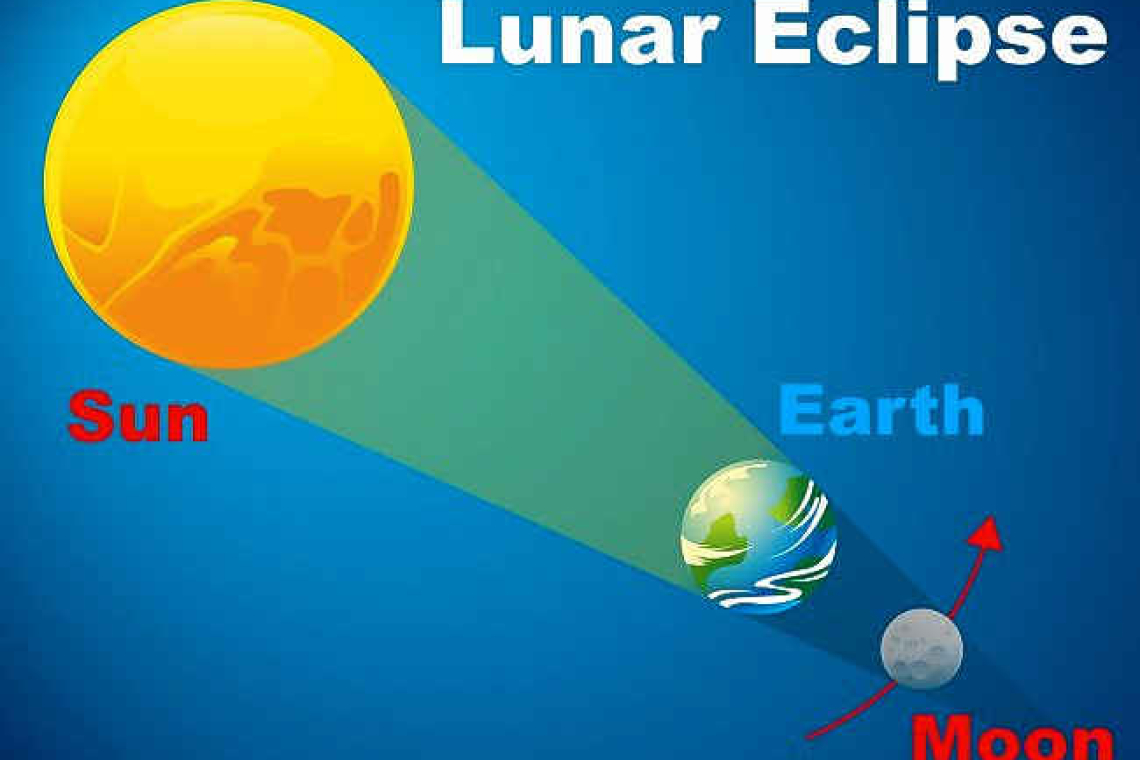~ St. Maarten’s Backyard Astronomy for March 22-24 ~
Sun rises at 6:13am
Sun sets at 6:23pm
Lunar phase: Full Worm Moon!
Moon rises at 4:17pm
Moon sets at 3:29am
Welcome to the start of the first eclipse season for 2024. It officially starts this Sunday and Monday (March 24-25) when there will be a penumbral lunar eclipse, followed by a total solar eclipse two weeks later on April 8. This total solar eclipse will not be visible here in St. Maarten at all, so this correspondent will be traveling northward in hopes of seeing a total block-out of all the sun’s light by the moon.
Although these are two different kinds of eclipses, lunar and solar, these two eclipses fall within what is called an eclipse season. Anytime two or more eclipses occur within a 35-day period, it’s considered one of these special spans of time. Later this year, there will be another eclipse season – on September 17-18, a very shallow partial lunar eclipse will occur, followed by an annular solar eclipse on October 2.
The moon will be round and bright this weekend, so some of our lesser stars may be washed out, but the more brilliant stars will still shine through. As we enter the weekend, you may notice the almost full-moon will be located near the brightest star in the constellation Leo the Lion. This is the beautifully bright star Regulus. The pair will be visible through dawn.
By Saturday night, the moon will be reaching a new post: the constellation Virgo the Maiden. Now Virgo has a bright star, Spica, but it may be more helpful to look a bit farther from the moon for Saturday’s stargazing. From the moon, look to the right, or west, for the first bright star: that is the “little dog star” known as Procyon. A bit farther in the same direction takes you to Sirius, the Big Dog Star – also the brightest real star in the entire sky. Then look past the moon to the left, or east, to find the bright star Arcturus in the constellation Boötes the Herdsman.
The full moon of March falls on Sunday night, and it is known as the Full Worm Moon. Imagine the winter freeze melting away and the awakening of the earth’s tiny humble creatures. Wiggle back to life, little worms, your time draws near!
Thank you for keeping up with the Night Sky articles, backyard astronomy designed for St. Maarten sky viewing. FYI: If you are out later on in the week, note that each star rises about four minutes earlier each day than written here, and the moon rises 50 minutes later. Night Sky is researched and compiled by Lisa Davis-Burnett. Earthsky.org is a key resource for information and images. Questions or comments? Email This email address is being protected from spambots. You need JavaScript enabled to view it.







